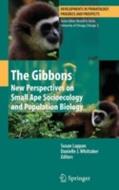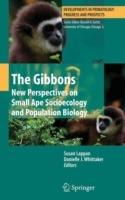The Gibbons: New Perspectives on Small Ape Socioecology and Population Biology
It is a great honor to be asked to introduce this exciting new volume, having been heavily involved in the first comprehensive synthesis in the early 1980s. Gibbons are the most enthralling of primates. On the one hand, they are the most appealing animals, with their upright posture and body shape, facial markings, dramatic arm-swinging locomotion and suspensory postures, and devastating duets; on the other hand, the small apes are the most diverse, hence biologically valuable and informative, of our closest relatives. It is hard for me to believe that it is 40 years to the month since I first set foot on the Malay Peninsula to start my doctoral study of the siamang. I am very proud to have followed in the footsteps of the great pioneer of primate field study, Clarence Ray Carpenter (CR or Ray, who I was fortunate to meet twice, in Pennsylvania and in Zurich), first in Central America (in 1967) and then in Southeast Asia. It is 75 years since he studied howler monkeys on Barro Colorado Island in the Panama Canal Zone. It is 70 years since he studied the white-handed gibbon in Thailand.
-
Curatore:
-
Editore:
-
Collana:Developments in Primatology: Progress and Prospects
-
Anno:2009
-
Rilegatura:Hardback
Le schede prodotto sono aggiornate in conformità al Regolamento UE 988/2023. Laddove ci fossero taluni dati non disponibili per ragioni indipendenti da Feltrinelli, vi informiamo che stiamo compiendo ogni ragionevole sforzo per inserirli. Vi invitiamo a controllare periodicamente il sito www.lafeltrinelli.it per eventuali novità e aggiornamenti.
Per le vendite di prodotti da terze parti, ciascun venditore si assume la piena e diretta responsabilità per la commercializzazione del prodotto e per la sua conformità al Regolamento UE 988/2023, nonché alle normative nazionali ed europee vigenti.
Per informazioni sulla sicurezza dei prodotti, contattare productsafety@feltrinelli.it



